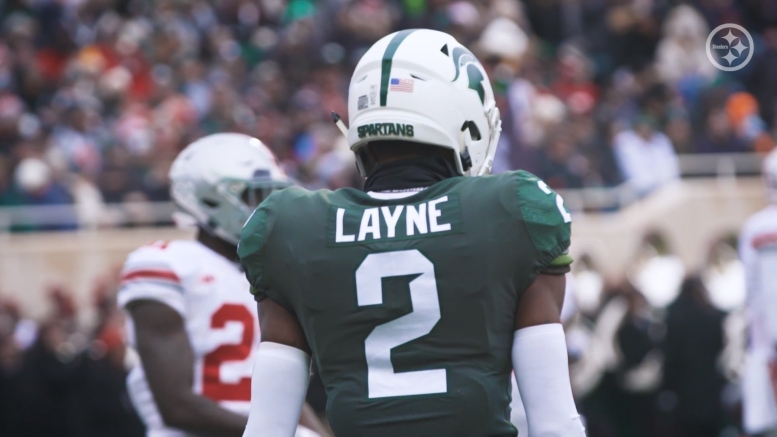Justin Layne wasn’t exactly a scrub prospect at wide receiver coming out of high school. His resume at that point included being an All-Ohio performer at that position, and he was good enough in doing that that he was able to earn a scholarship to play at Michigan State.
Of course he would end up starting games at cornerback by the end of his freshman year. And that would ultimately result in his being drafted by the Pittsburgh Steelers, as a cornerback, with the 83rd pick in the 2019 NFL Draft. Would have had anywhere near that fortune if he stuck at wide receiver?
Layne admitted to Joe Rutter, “I wasn’t in favor of it at first”, when Head Coach Mark Dantonio asked him to move from wide receiver to cornerback. “But it worked out, so I’m in favor of it now”, he added.
So are the Steelers, who expressed surprised that he was still available toward the latter stages of the third round. Many others also thought that he would be drafted higher. He told reporters during his post-selection conference call that he felt he would go in the second round, and other post-draft analysts have rated him as one of the better value selections.
Of course, only time will tell whether or not that is the case. But one thing is clear, and that is that he has the physical attributes that are an automatic plus to play the cornerback position against today’s tall, fast wide receivers who are coming to dominate the league.
“There are a lot of 6’2”, 6’3” receivers, there are not a lot of 6’2”, 6’3” cornerbacks that can move like me”, he told Rutter yesterday during the first day of rookie minicamp, his first taste of professional football on a practice field. “I was thinking about my future for the most part”.
At least in terms of getting his foot in the door, that decision has paid off up to this point, because it landed him with a good organization where his position was needed, and he comes in as a third-round selection, whereas he might not even have been drafted if he stayed at wide receiver.
At the same time, expectations must be tempered as it concerns his year-one impact. For starters, he figures to kick off his career toward the very bottom of the depth chart, certainly trailing starters Joe Haden and Steven Nelson, as well as Mike Hilton and Cameron Sutton. His limitation to playing only on the outside will also potentially limit his immediate contributions.
But if he earns the playing time, he’ll probably get it. Nelson can kick inside, something that the Steelers were eager to point out while discussing his signing. He spent most of his four years with the Kansas City Chiefs playing in the slot primarily before working on the outside last season.








